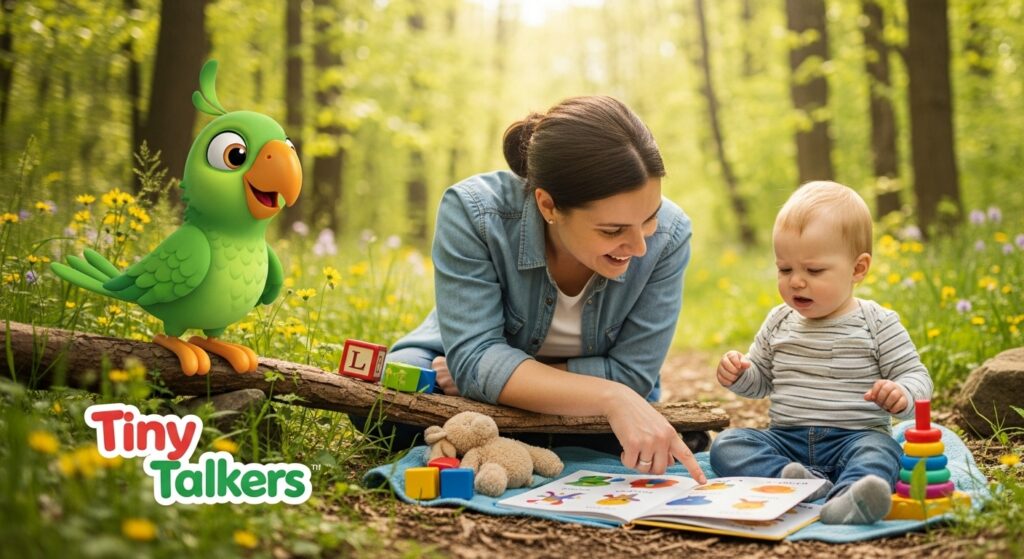Is your toddler’s speech development on your mind? You’re not alone. Many parents are eager to support their child’s communication skills, and the good news is you don’t need to invest in expensive gadgets or programs. Leveraging toys you already have at home can be an effective, budget-friendly way to enhance your toddler’s speech and language development. By transforming playtime into a speech-boosting opportunity, you can help your little one expand their vocabulary, improve articulation, and build confidence in their speaking abilities. Let’s explore some engaging ideas to get started.
Building Blocks of Communication
Colorful Blocks and Stacking Toys
Blocks and stacking toys are staples in most households, and they are perfect for introducing new vocabulary. As your child stacks or builds, you can label the colors, shapes, and sizes of the blocks. Use phrases like “Let’s put the big blue block on top of the small red one,” to incorporate descriptive language. Encourage your toddler to repeat the words after you, and soon enough, they’ll be identifying and describing their creations independently.
Enhancing Interaction with Dolls and Action Figures
Dolls and action figures can be powerful tools for language development. They are excellent for role-playing scenarios, which can enhance your child’s understanding of everyday activities and social interactions. Guide your toddler through simple narratives, such as feeding the doll or saving a toy from danger. Use expressive language to describe actions and emotions, and ask open-ended questions like “What should we do next?” to encourage your toddler to think and respond in complete sentences.
Imaginative Play with Everyday Toys
Toy Kitchens and Pretend Play Sets
Pretend play is a goldmine for language development. Toy kitchens, tool sets, or doctor kits offer limitless opportunities for your toddler to practice new words and phrases. As you play together, introduce specific vocabulary related to the activity, such as “stir,” “mix,” “hammer,” or “checkup.” Encourage your child to narrate what they are doing, and gently correct any mispronunciations by repeating the words correctly. This approach helps reinforce proper speech without discouraging their efforts.
Storytelling with Puppets
Puppets can quickly become your toddler’s best friends, especially when it comes to storytelling. Use hand puppets or finger puppets to create engaging stories. Encourage your child to voice the puppets, prompting them to use their imagination and verbalize their ideas. This activity not only boosts speech but also enhances creativity and listening skills. Plus, it can be a delightful, bonding experience for you both.
Music and Movement for Speech Enhancement
Sing-Along and Musical Instruments
Music is a universal language, and singing is a fantastic way to develop speech. Use musical toys or even homemade instruments like pots and pans to create rhythms and beats. Encourage your toddler to sing along to their favorite songs or make up their own tunes. Singing helps with articulation, rhythm, and memory. Additionally, choosing songs with repetitive lyrics and rhymes can further support language development by reinforcing word patterns.
Dance and Movement Games
Incorporating movement with language can enhance speech development. Use toys like ribbons, scarves, or balls to create interactive games that involve both language and movement. For example, you can say, “Let’s throw the ball up high!” or “Wave your scarf like a butterfly!” This integration of physical activity with verbal instructions helps toddlers understand spatial concepts and action words, enriching their vocabulary.
Creating a Language-Rich Environment
Labeling and Describing
Another practical method to enhance speech development is through labeling and describing everyday objects. Use sticky notes to label toys, furniture, and other items in your home with their names. As you play with your child, point to these labels and say the words aloud. This exposure helps your toddler associate words with objects and actions, reinforcing their understanding and recall.
Reading and Interactive Storybooks
Books are invaluable tools for speech and language development. Choose interactive storybooks that encourage participation, such as lift-the-flap or touch-and-feel books. As you read together, ask your child questions about the story and encourage them to predict what might happen next. This interaction fosters critical thinking and verbal expression. Repeatedly reading the same book can also be beneficial, as it allows your child to become familiar with the rhythm and language of the story.
Reassurance and Support
A nurturing and supportive environment is crucial for any child’s speech development journey. Remember that every child progresses at their own pace, and it’s important to celebrate the small victories along the way. By incorporating these engaging playtime ideas into your daily routine, you’re providing your toddler with a rich language environment that promotes their communication skills. Keep in mind that patience, encouragement, and consistency are key. With time and practice, you’ll likely witness your toddler’s speech flourish, setting a strong foundation for their future learning and interactions.

